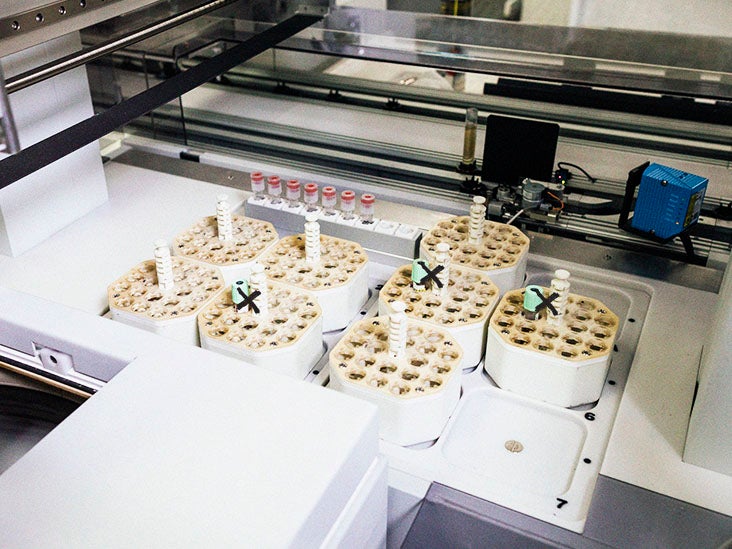Blood
Pseudothrombocytopenia: Definition, causes, and more
Pseudothrombocytopenia (PTCP) is when blood test results incorrectly suggest a low platelet count. This can show that a person has thrombocytopenia when they do not.
The anti-clotting agents that lab technicians use during testing can affect results and cause PTCP.
This article takes an in-depth look at PTCP, outlining the causes and risk factors. It also covers the clinical implications of PTCP and how to know when it shows up in test results.
PTCP occurs when blood test results seemingly show that a person has thrombocytopenia when they do not.
According to the National Heart, Lung, and Blood Institute, thrombocytopenia is a condition that involves low blood platelet counts. In adults, a typical platelet range is between 150,000 and 450,000 platelets per microliter of blood.
Platelets are the smallest blood cells in the body. They help maintain healthy blood consistency. They are also important in preventing bleeding. Having a low platelet count can lead to bleeding disorders.
Unlike genuine thrombocytopenia, PTCP does not cause symptoms as it is not a real condition.
Thrombocytopenia can cause the following:
Anyone with symptoms of thrombocytopenia should speak with a doctor.
PTCP occurs when platelets clump together. Some medical tests detect an absence of free-floating platelets in the blood. Clumping can make it seem like the blood has too few platelets.
According to a 2021 review, several complicated biochemical processes can cause platelet clumping. However, one important cause of PTCP is exposure to dipotassium ethylenediaminetetraacetic acid (EDTA).
EDTA has many medical uses, including as an anticoagulant.
EDTA can prevent blood clotting in blood samples, allowing doctors to more accurately determine the concentrations of various blood cells.
However, in 0.03–0.27% of the general population, adding EDTA to a blood sample can cause blood to clot, leading to PTCP.
Some things make it more likely for a person’s blood to respond to EDTA this way, including:
Other possible risk factors may include:
There is no treatment for PTCP as it is not a medical condition.
When preparing blood samples for laboratory testing, healthcare professionals can avoid PTCP using an anticoagulant different from EDTA.
Experts have developed ways of detecting PTCP.
One way to spot PTCP is to use different blood testing methods. These may ignore or detect platelet clumping. If a lab detects platelet clumping in the blood after applying an anticoagulant, they may request a new sample. They can then prepare this with a different anticoagulant.
PTCP can lead to an incorrect diagnosis of low platelet count.
This may trigger requests for unnecessary testing. Additional tests may be time-consuming, stressful, and potentially harmful.
PTCP may also lead to unnecessary treatments, such as platelet transfusions or the use of the steroid dexamethasone.
PTCP is when blood test results suggest a false low platelet count. PTCP occurs when platelets in a blood sample clump together.
PTCP often arises from exposure to EDTA, an anticoagulant labs use to prepare blood samples for testing. However, in a small number of people, EDTA can cause clumping. This is likelier to occur in pregnant people and individuals with autoimmune conditions.
PTCP can prompt doctors to recommend unnecessary medical testing and treatment. However, there are methods for ruling out PTCP.

